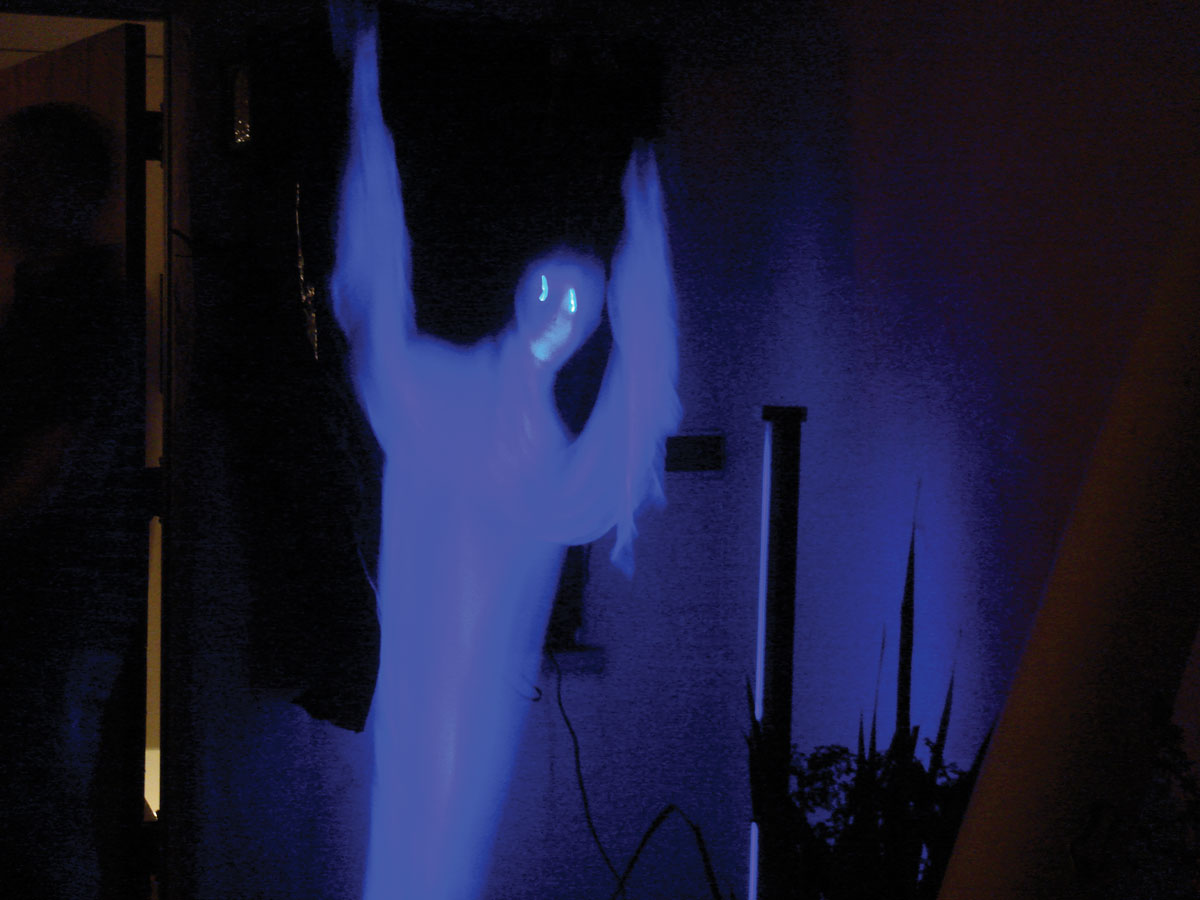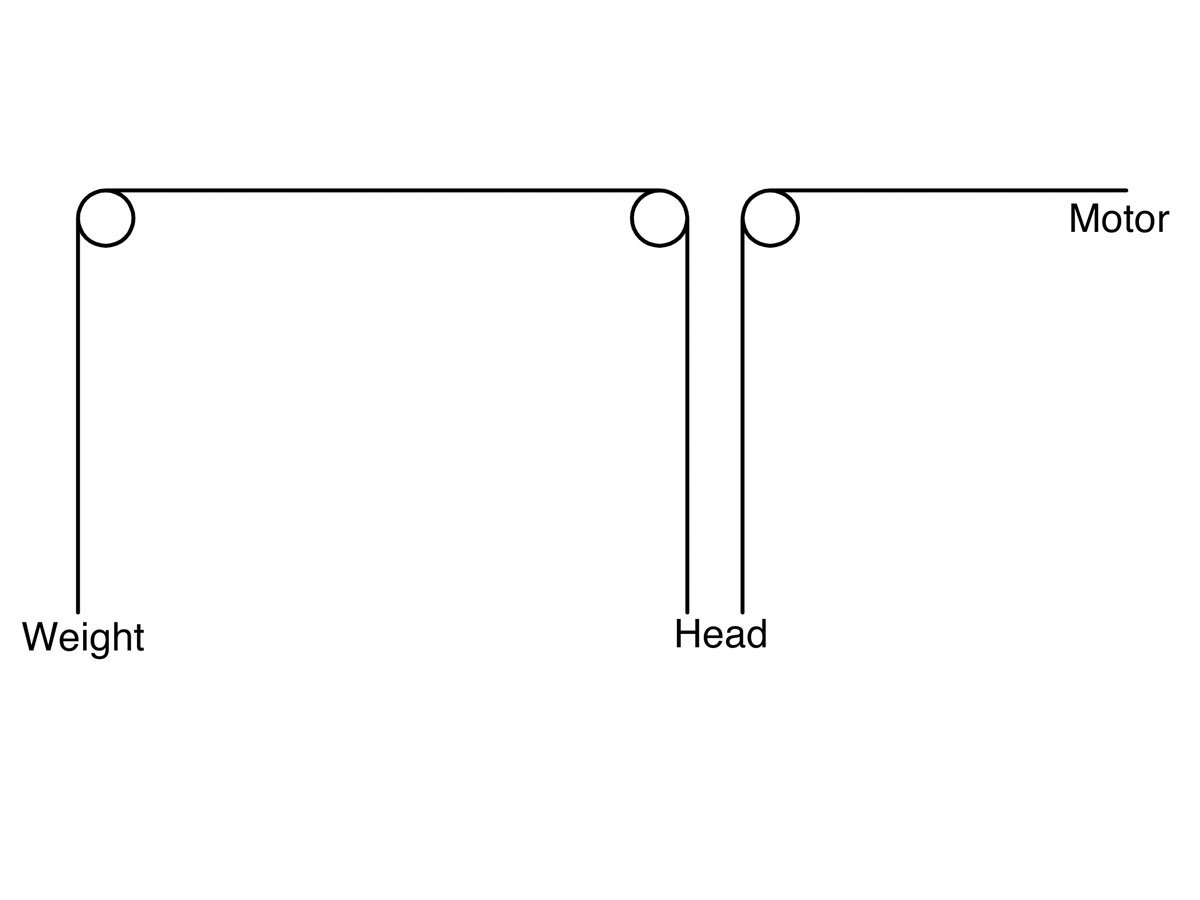This photo shows the completed ghost marionette. Note the shading on the mask, crudely applied with a rattle-can of black paint; the cheesecloth will soften these lines in the final ghost. I decided I didn’t like the hands and cut them off after this picture.
Drape your cheesecloth over, around, and through your marionette, making a ghostly visage. You can take the minimalist approach that I tend to use, or you can take more care in your draping, outlining the face in a hood of fabric, and making the sleeves dangle artfully around the hands. You can even create a complete gown for the ghost (taking care with your weight limit).
Light up the ghost with a UV black light. If your fabric doesn’t shine enough under black light, soak it in laundry bluing or brightening agent. These are UV-reactive and do wonders for your glow.
Another optional addition would be LED lights in the eye sockets of the mask. Set them deep into the foam ball and glue some additional fabric to the inside of the eyeholes to diffuse the light.
The opening photo shows the ghost, in a minimalist shroud, illuminated by black light, as it steps through its motion cycle.























